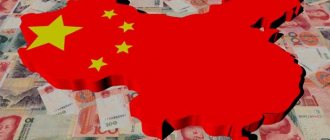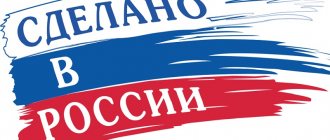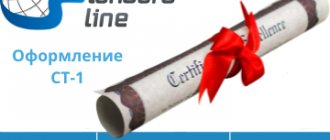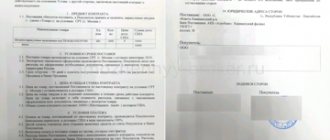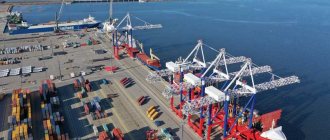Regulatory regulation of the issue
The basic requirements for filing applications for participation in tenders are established by law 44-FZ: in special articles devoted to certain types of procurement, the need to disclose the state of production is established - the participant is obliged to indicate it.
According to Part 5 of Art. 24.1 44-FZ, the government developed and adopted Resolution No. 1401 of November 5, 2019, which approved standard application forms for participation. Application forms require the participant to indicate the digital code of the country of origin of the goods according to the all-Russian classifier.
The classifier was approved by Decree of the State Standard of Russia dated December 14, 2001 No. 529-st and contains a register of manufacturing states and their:
- full and abbreviated names;
- two-digit and three-digit letter codes;
- numerical designations that participants will transfer to applications.
IMPORTANT!
As of January 12, 2021, new rules for determining the state of manufacture of certain types of products for public procurement are in effect, which were approved by the Council of the Eurasian Economic Commission in decision No. 105 of November 23, 2020.
How to determine where a purchased item was produced
The country of manufacture of products from the list, which is attached to the EEC decision No. 105 of November 23, 2020, will have to be determined according to the conditions, production and technological operations that are enshrined in this document. Signs of the country of origin: where the product is:
- received or produced;
- has undergone sufficient processing.
To determine a sufficient degree of processing, the following rules are used:
- Processing is considered sufficient if after it the code of the final object, according to the Harmonized System of Description and Coding of Goods (HS), differs by at least one of the four digits from the code of the source material. The first four digits of the code are considered - a difference in one of them is enough.
- Recycling is sufficient if the cost of the original foreign material is less than half the cost of the final object.
It is equally important how to correctly write the country of origin of the goods according to 44-FZ, if processing is insufficient - the state of production recognizes the place of manufacture of the material for the item purchased:
- if all materials originate from one geographical point, the situation is clear - this place is the state of production of the item being purchased;
- If materials from different countries are used to create an object, the place of production is the one from which the largest amount of materials was imported in value terms. The calculation takes into account the cost of materials calculated on Ex-factory terms, that is, the cost without the cost of transporting materials from the warehouse of their manufacturer to the place of their processing into the final object.
The place in which it:
- stored without processing;
- prepared for shipment, for example, unpacked, sorted;
- has been washed, cleaned, treated with substances;
- undergone painting or polishing;
- frozen or defrosted;
- was subject to other types of influence.
Rules for determining country of origin
These rules apply to products that were entirely produced in the territory of a state party to the Agreement, or partially processed/processed in such a territory.
Fully manufactured products include:
a) natural resources extracted underground, in water bodies and in the air of the specified country;
b) plant products grown and (or) collected in a given country;
c) animals that appeared and grew up in a given state;
d) products obtained in a given country from animals raised in it;
e) products obtained as a result of hunting and fishing in a given country;
f) products of marine fishing and other products of marine fishing;
g) products obtained on a processing vessel of a given country from the raw materials specified in paragraph “e”;
h) products obtained from the seabed or from the subsoil of the sea outside the territorial sea of a given country, provided that this country has exclusive rights to develop this seabed or these subsoil;
i) waste and secondary raw materials obtained as a result of production or other processing activities, as well as used products collected in a given country and suitable only for processing into raw materials;
j) high-tech products produced in outer space on spacecraft;
k) goods produced in a given country from the raw materials specified in paragraphs “a” - “k”.
To determine the TSP, the cumulative method can be used in the case of sequential processing/processing.
If the final product is produced on the territory of a state party to the Agreement, but from raw materials from other states party to the Agreement, confirmed by a certificate of form ST-1, then the territory of origin will be the state in which it was last processed/processed.
If there is no certificate of the ST-1 form on the origin of raw materials from other states party to the Agreement, then the country of origin of the final product is determined based on the criterion of sufficient processing/processing (points “a”, “b”, “c”).
If a third party who is not a party to the Agreement is involved in the production, the TTP is determined based on the criteria for sufficient processing/processing:
a) a change in the commodity position according to the Commodity Nomenclature of Foreign Economic Activity of at least one of the first four characters that occurred as part of processing/processing;
b) performing the necessary production and technological actions, as a result of which the goods are considered to originate from the state in whose territory these actions took place;
c) the ad valorem share rule, when the price of the raw materials used of foreign origin reaches a fixed percentage share in the cost of the final product.
If the raw materials for production originate from a foreign country, then the territory where the final product was produced is considered TSP. However, foreign raw materials can be used if they have a commodity position similar to the final product and their cost does not exceed 5% of the final product.
How does SPT differ from similar terms?
The concept of “state of origin” should not be confused:
- with the place of production of the goods, for example, the name of a specific city or region. According to the rules of 44-FZ, the country of origin of products requires an indication of a specific state;
- manufacturer's location. Here's how the manufacturer and the country of origin differ: the place of registration of the company does not always coincide with the place of registration of the trademark or the location of production;
- the state to which the trademark belongs. What is the difference between the country of origin and the country of production: the state where the manufacturer of the product is registered is not the place of production, but the country where the trademark belongs.
Classifier of countries of origin of goods
Resolution of the State Standard of Russia dated December 14, 2001 No. 529-st. (as amended on May 29, 2019) the All-Russian Classifier of Countries of the World (OCSM) was adopted. It can be found, for example, on the website classificators.ru
In the header of the page you can use the quick search system by code:
Or use the proposed table, which includes the names of states (short and full), digital and letter codes:
Common errors include:
- Use of abbreviations not reflected in the classifier. For example, the Russian Federation, China or the USA. According to the approved regulations, the correct options will be: “Russian Federation” or “United States of America”, which are indicated in the classifier.
- Indication of a city or region without a country. For example, “Moscow region” or “Vladimir region”. The correct reference is to the “Russian Federation”.
- Indication “Belarus” instead of the correct “Belarus”.
- Phrases such as “Russian-made product”, “Country of manufacture – Russia” or “Produced in Russia” are unacceptable, although they allow you to determine the country of production. The correct solution would be to indicate “Russian Federation”.
How to indicate in the application
The requirement to indicate the country of origin of goods 44-FZ in the application using a code from the all-Russian classifier was introduced into Resolution No. 1401, amending it by Resolution of the Government of the Russian Federation dated February 19, 2020 No. 180.
If the country of origin is Russia or the Russian Federation, you will have to indicate code 643 according to OKSM.
Here is an example of what a sample of filling out the name of the country of origin of a product looks like according to 44-FZ in 2021:
How to confirm SPT
If the tender object is subject to national treatment, in such a procurement it is especially important to understand how to correctly indicate the country of origin of the goods in the first part of the application: in order to participate, the company must document the place of origin of the object proposed for delivery. If she does not do this, the object is recognized as foreign by default. This is what confirms the country of origin of food and other industrial products:
- CCI examination report;
- certificate in form ST-1;
- an extract from the register of goods manufactured in the EAEU;
- extract from the register of the Ministry of Industry and Trade;
- declaration of the procurement participant.
ConsultantPlus experts examined how the national regime is applied in public procurement in 2021. Use these instructions for free.
Get free access to ConsultantPlus for 2 days
Certificate
You can obtain a certificate of origin of goods from the authorized body or organization of the country from which it is imported. These organizations, in turn, issue a certificate based on information they receive from the country where the product was produced.
In the territory of the Customs Union, certain criteria apply, according to which the country of origin of the goods is indicated. They are enshrined in agreements between member countries of the EAEU. But goods are imported into the territory of the Customs Union from other states. In this case, the country of origin may be indicated on the basis of some other criteria that are established in these states. In this case, within the EAEU, the country of origin should be determined in accordance with the criteria adopted in the Customs Union.
If goods are exported from the territory of the EAEU, then a certificate of origin is attached to it in the following cases:
- if it is necessary in accordance with the terms of the contract or the rules of the country where the goods will be imported;
- if required by international treaties.
The certificate of origin of the goods is attached to the customs declaration and other documents when the goods are placed under the customs procedure. If customs determines that the certificate is issued incorrectly, then the declarant may be denied tariff preferences. Also, the customs authority may request additional documents and information from the organizations that issued such a certificate.
The authorities or organizations that issued the certificate must store information about its issuance, including its copy and other documents, for at least 3 years.
As stated by the country of manufacture in the contract
Here's how to indicate the country of origin when purchasing services in a government contract: indicate the place of origin of the purchased item. This characteristic is indicated among other parameters of the procurement object directly in the text of the agreement or in one of the annexes to it - technical specifications or specifications.
There are no big peculiarities in how to specify the country of origin of the goods in the contract - the wording is copied from the text of the application of the winning participant.
About the author of this article
Polina GoltsovaLawyer My initial specialty was lawyer, legal consultant. For the first two years of practical activity, she worked in the general legal department of the organization, where she provided comprehensive legal support to the employer’s activities.
However, since 2013, government procurement has become the main focus of my practical activity. I worked in the contract services of several large budgetary institutions at the federal and regional levels and a commercial organization whose activities are related to government procurement. She was involved in legal support of government procurement, contractual and claims work, represented the interests of employers in arbitration courts and the Federal Antimonopoly Service.
For the last three years I have been creating legal content, writing popular articles on current issues of law enforcement for several information portals.
Other publications by the author
- 2021.12.06 Applications How the rules for evaluating applications of competition participants will change from 2022: PP 1085 is cancelled!
- 2021.11.15Customer documentsInstructions for the purchase of furniture under 44-FZ
- 2021.10.28 Bank guarantees All changes in 44-FZ for 2021 and 2022: tables by month
- 2021.10.18 Procurement control Instructions for drawing up an order for the appointment of a contract manager
What is a “Certificate of Origin”?
What is a “Certificate of Origin”?
What is a “certificate of origin” and why is it needed? This question is often asked by participants in foreign economic activity during customs clearance. Let's see what is said about this in the Customs Code of the Customs Union (CU).
Article 36 is called “Certificate of origin of goods”. It gives the basic definition: “Certificate of origin of goods is a document that clearly indicates the country of origin of goods and issued by the competent authorities or organizations of a given country (exporter) …”.
It is issued when goods are exported from the customs territory of the Russian Federation - the Customs Union (i.e. during export) by organizations authorized by the Government of the Russian Federation - Chambers of Commerce and Industry. When importing goods into the customs territory of the Russian Federation - Customs Union (i.e. when importing), the relevant competent organization of the country in which the goods were manufactured. (Chambers of Commerce and Industry or individual organizations specifically authorized for this purpose, of the country in which the product is manufactured).
The main function of the certificate of origin is participation in customs tariff regulation, where it has a certain influence on the choice of the rate at which the import customs duty is calculated. Depending on the country of origin of the goods, the following rates of customs duties are established: basic, preferential, maximum.
1. Basic (conventional) duty rates are applied to goods originating from countries that represent most favored nation (MFN) treatment.
2. Preferential duty rates are a type of preferential rate and are provided to a country or group of countries. The list of these countries is determined at the government level in accordance with the National System of Preferences of the Russian Federation, which includes the following elements:
- list of developing countries - users of the Russian Federation system of preferences. For goods from these countries, an import customs duty rate of 75% of the base rate is applied.
- list of least developed countries - users of the Russian Federation system of preferences. Goods from these countries are fully exempt from customs duties.
- a list of goods originating from developing and least developed countries for which full exemption from customs duties is applied.
- tariff preferences in the form of exemption from customs duties on goods from countries that together with the Russian Federation form a free trade area (CIS, Customs Union).
3. Maximum rates apply to goods for which the country of origin has not been reliably established at the time of customs clearance. In this case, the base rate is doubled.
The certificate of origin of goods is presented together with the Customs Declaration (CD) and other documents during customs clearance of goods. A certificate of origin allows you to take advantage of preferential customs duties or be exempt from paying them altogether. The provision of tax benefits (i.e., exemption from import customs duties (“preferences”) is directly related to the pricing of the exported or imported product, and, consequently, to its competitiveness. In some cases, such a certificate may be required by the bank in which it was issued letter of credit (when opening a letter of credit) and/or upon further sale of goods in the buyer's country. In some cases, a copy of the certificate of origin of goods can be submitted to the tax authorities to confirm the fact that the goods crossed the customs border of the Russian Federation when exporting for VAT refund (or application of a zero rate value added tax).
It is mandatory to submit a certificate of origin of goods in the following cases:
- for goods originating from the country, which are provided with a preferential regime of customs duties (import customs duties are canceled or reduced),
- for goods whose import from a given country (or to a given country) is regulated by quantitative restrictions (quotas) or other methods of non-tariff regulation,
- in cases where the documents for customs clearance (passports, descriptions, quality certificates, etc.) do not contain information about the country of origin of the goods or the customs authority has doubts about the reliability of information about the country of origin of the goods, which are indicated in the declaration (TD) or in other shipping documents,
- in cases where this is provided for by international agreements in which the Russian Federation participates, for example, an agreement on the supply of certain steel products to the EU.
As we can see, the issuance of a certificate of origin of goods and its submission to the customs authorities are associated: firstly, with the presence of preferential treatment in the importing country, secondly, with the determination of the processing criterion, and thirdly, with the problem of determining the country of origin of the goods. Therefore, the certificates themselves are conditionally divided into three groups:
1. Certificate of origin of goods of general national preference, which was developed by the Chamber of Commerce and Industry of the Russian Federation in accordance with international practice and the Rules for determining the country of origin adopted by the Commission of the European Community - certificate form “A”. As of January 1, 2014, this certificate was canceled
.
2. Certificate of origin of goods, provided for by the national system of preferences and national legislation, which was developed by the Chamber of Commerce and Industry of the Russian Federation in accordance with the Rules for determining the country of origin of goods, approved by the decision of the Council of Heads of Government of the Commonwealth of Independent States - certificate in the form “ST-1”. Based on this certificate, preferential goods manufactured or subjected to sufficient processing in the Russian Federation and imported into the CIS countries are completely exempt from import customs duties.
3. In all other cases, when you simply need to determine that the product originates from a particular country (for example, “most favored nation” treatment), a “General Form” certificate is submitted - “Certificate of Origin”.
4. The certificate in the form “ST-2” is intended for the export of goods from the Russian Federation to the Republic of Serbia. The presence of such a certificate allows you to receive customs preferences in the form of a reduction or zero customs duty rate.
At first glance, it may seem that the certificate of origin of goods is a useless document, the receipt of which takes up unnecessary time and money. It is possible not to have a certificate of origin of the goods, but it will be expensive. In the event that there is no certificate, increased rates of import duties are applied to the exported goods. However, if a certificate in the prescribed form is subsequently provided, the preference regime will be restored and the paid duties will be returned.
Certificates of origin of goods are filled out on special, secure forms with strict reporting requirements. In accordance with the Law of the Russian Federation “On Chambers of Commerce and Industry in the Russian Federation” dated July 7, 1993, certificates of origin of goods can be certified by chambers of commerce and industry that have certified specialists registered in the CCI Expert register and have an authorized signature and seal . Certificates made on other forms (including those with a different number of columns and/or different filling), despite a similar name, cannot serve as a basis for the provision of preferences.
The certificate clearly indicates that the product specified in it originates or has been sufficiently processed in the country concerned. The document also contains information that the product satisfies the relevant criterion of origin and a written certification from the chamber of commerce and industry that issued the certificate that the information specified in the certificate is true.
The issuance of a certificate is associated with the following three problems:
- determination of the country of origin of the product (country of origin),
- establishing processing criteria,
- establishing the existence of an appropriate preference.
Let's look at these problems in more detail.
Determining the country of origin of a product is important in order to reduce the number of counterfeits on the market. Unfortunately, the market (including the Russian one) is flooded with various counterfeits of well-known world brands of goods that do not have a manufacturer’s warranty or documents confirming the country of origin. This especially applies to household appliances and mobile phones. There are cases when the cardboard packaging of a box with a mobile phone contains the inscription: “Made in Germany,” and the certificate of origin of the goods indicates that the mobile phone was made in China. Or the certificate of origin of the goods indicates that the baby stroller comes from Germany, while the manufacturer is indicated in the passport as a Polish company. Such a discrepancy naturally raises certain doubts - it is not known how long this product will last?
The certificate of origin of the goods must indicate the processing criterion. A distinction is made between goods that are entirely produced in a given country. Such goods include minerals, plant and animal products grown in the country, high-tech products obtained in outer space and on space objects owned by a given country, products and products produced in a given country, made exclusively from raw materials and materials, produced in this country. In this case, the criterion “P” is indicated - completely produced in a given country (for certificates in the ST-1 form) or the index “P” (for certificates in the ST-2 form).
If the production of goods involves raw materials, materials and components supplied from other countries, then the criterion of sufficient processing is applied. This criterion is applied if, during the manufacture and processing of goods, the following has occurred: a change in the commodity position of the commodity nomenclature of Foreign Economic Activity at the level of the first four digits, production and technological operations sufficient to consider the goods originating from a given country and the “ad valorem share” rule have been carried out, i.e. .e. a change in the cost of a product when the percentage of the cost of the imported raw materials, materials and components used reaches a certain, fixed value in the price of the final exported product.
In this case, the code “D” is entered indicating the first four characters of the commodity position of the final product, for example, “D9405” for glass products that use quartz sand from Ukraine (for certificates in the ST-1 form). For goods produced in Russia with the content of imported raw materials and materials, as a rule, at least 50%.
At the same time, simple operations such as ensuring the safety of goods during storage and transportation, operations for preparing goods for sale (packaging, packing), simple assembly operations (screwdriver assembly technology, mixing product components without imparting characteristics to the resulting product, etc.) cannot meet the criterion of sufficient processing. significantly different from the original components.
Certification and issuance of certificates by Chambers of Commerce and Industry is carried out on a reimbursable basis, i.e. the exporter pays for this service. In order to eliminate “free creativity” and discrepancies in payment levels for this service, the Russian Chamber of Commerce and Industry, by decision of the Board, approved tariffs and recommended that all chambers of commerce and industry apply them.
Many exporting companies attribute the costs of certification and issuance of certificates of origin of goods to their own account (i.e., include them in their costs, for example, under the item “other expenses”). In our opinion, this is completely wrong in its economic essence. Let's consider this example: you are an exporter, sending glass products to the EU (foreign economic activity code - 9405) in the amount of 20,000 US dollars. According to the Law on Customs Tariffs, an import duty of 3% of the customs value is established for products with such a foreign economic activity product nomenclature code. If there is no certificate of origin of the goods, then the importing company will have to pay an import duty in the amount of:
20,000 x 3% = 600 US dollars,
and if she does not prove that this product originates from Russia, then generally a double duty, i.e. 600 x 2 = $1200.
Thus, the importer will have to include in his costs the amount of 600 (or in the worst case, 1200) US dollars, which at the exchange rate of 1 US dollar is 60 rubles. will be 36,000 rubles.
Registration of a certificate and an examination report at the Chamber of Commerce and Industry will require only 4,000 rubles. As we can see, there is a benefit, the importer receives a preference in the amount of 36,000 - 4,000 = 32,000 rubles. (saving 32,000 rubles!). As you can see, by its economic nature, the cost of issuing a certificate must be attributed to the importer’s costs, regardless of whether the condition for issuing the certificate is written down in the Contract (agreement) or not. If the cost of one delivery to the address of one recipient is 20,000 rubles. and less, provision of a certificate of origin of the goods is not required.
Almost all countries require the provision of a certificate of origin for imported goods, and in some countries (for example, Ukraine) the original Certificate of Origin of the goods is also required. When exporting a product to most countries, you are required to obtain some type of certificate of origin, which certifies that the product was in fact produced in the country from which it was shipped.
In most countries, certificates of origin are issued and issued by national chambers of commerce and industry. In Asian countries, a consular invoice is also required, i.e. the invoice for the supply of goods must be certified by the consul of the relevant country.
In the UK and Germany, certificates are issued by chambers of commerce and industry at the legal address of the exporting company. In the Czech Republic, the right to issue a certificate is granted to the Customs Service and the Economic Chamber. In China, in addition to the All-China Chamber of Commerce and Industry, the right to issue and certify certificates is granted to the regional Inspection and Quarantine Bureau.
In any case, the certificate of origin of the goods is issued either in accordance with national regulations, or in accordance with the specifics of the concluded Contract (agreement) for the supply of goods. Therefore, it is very important, before signing an export or import Contract (agreement), to find out in advance in detail about the methods and procedure for obtaining preferences in the country in which your transaction partner is located.
Malykh Vladimir Ilyich,
Deputy Director for Expertise and Certification
Chamber of Commerce and Industry of Korolev
